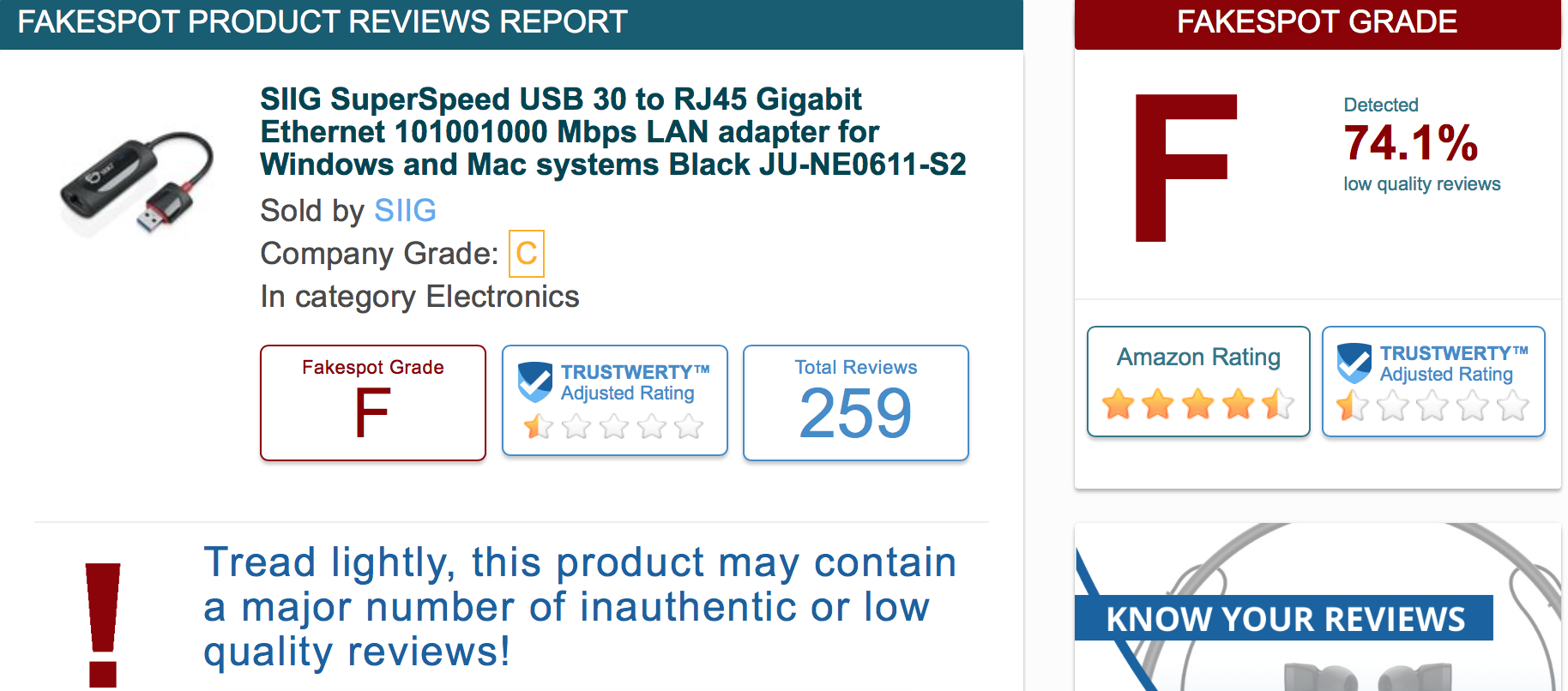
Online reviews of products, services and establishments are a great way for customers to research a future purchase. However, can you trust that these review are legitimate? Businesses could be asking their customers to write positive reviews sometimes offering an incentive to do so. Not to mention, employees and public relations and marketing firms pretending to be consumers writing rave reviews. How can you tell a real review from a fake one?
According to Fakespot.com:“Recent reports of companies tampering with reviews have led to consumer doubt about their validity, and for good reason. In the last year Amazon filed lawsuits against a number of companies that offered to pay for positive reviews, while stories continually come to light of schemes which offer free or discounted products in return for reviews.”
FakeSpot.com is an online resource for reviewing reviews of products and services on Amazon and Yelp. Their system will analyze reviews and grade them on whether they are reliable or not. Be aware, they are reviewing the reviews not the product or service.
All you have to do copy the URL from an Amazon or Yelp page and paste it into the appropriate field on Fakespot.com home page, Click the submit button and you will have the results shortly. Fakespot scans both the reviewer and the review for things like purchasing verifications, date correlation, writing style, content correlation and purchasing patterns.
I checked out a product I bought on Amazon that I returned because it was inferior which surprised me because it had great reviews. The product reviews were rated an “F” and identified factors like inauthentic reviewers, product exchange for reviews and low review content quality. An “F” means that the reviews contained 44% or below legitimate reviews and reviewers.
So before you take those reviews for face value – you may want to check their authenticity at Fakespot.com.
Follow Key to Computing for more tips, tricks and site reviews.